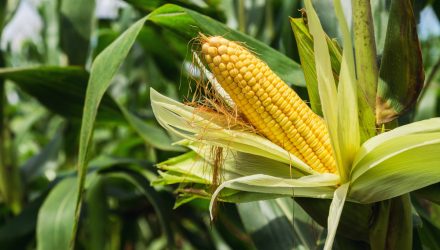A major supply disruption may be what corn needs to shake off its price decline. It may come in the form of a leafhopper infestation that’s plaguing Argentina’s corn crops.
That could be particularly problematic for the commodity’s prices given that that country is the second largest corn producer in South America. Globally, only Brazil and the U.S. are ahead of Argentina when it comes to exports.
“Corn farmers are seeing their fields ravaged by a plague of leafhopper insects,” reported Farm Progress. “The infestation is slashing production potential for the world’s third-largest exporter of corn just as harvesting gathers speed.”
The infestation is concerning given that the Rosario Board of Trade said it was “unprecedented” in a report. Likewise, a Reuters report said the infestation knocked an estimated $1.3 billion from the expected 2023/2024 corn crop.
“There’s concern that the damage will keep increasing as the crop cycle progresses,” the analysts at the Rosario Board of Trade said in the report.
As mentioned, corn has been on a downward trend, with the S&P GSCI Corn index down 6% for the year and thus, this could be the supply disruption it needs for bullish investors. If that’s the case, they may want to consider exposure now while prices are still depressed, with funds like the Teucrium Corn Fund (CORN).
The fund tracks three futures contracts for corn traded on the Chicago Board of Trade. It includes 35% second-to-expire contracts, 30% third-to-expire contracts, and 35% December following the third to expire. The various contract exposures help the fund limit the negative effects of rolling contracts, especially during a market in contango.
Soybeans Could Also Be Affected
Heavy rains could also put Argentina’s soybean production in jeopardy. Like corn, soybeans have also been trending lower, but a supply disruption could reverse its course.
“If the forecast for more rains is right, the harvest pace will slow,” said Bruno Ferrari, a researcher at the Rosario bourse. “We’ll see damage from excess moisture, affecting quality, and potentially a cut to our national production estimate.”
Investors looking to get exposure to soybeans should consider the Teucrium Soybean Fund (SOYB). The fund provides similar exposure to what investors could obtain by trading in soybean futures contracts.
SOYB is also an option for longer-term buy-and-hold investors who want to diversify their current portfolios with commodities exposure. And if short-term traders want to take advantage of upside in soybean prices, SOYB can serve that purpose as well.
For more news, information, and analysis, visit the Commodities Channel.


